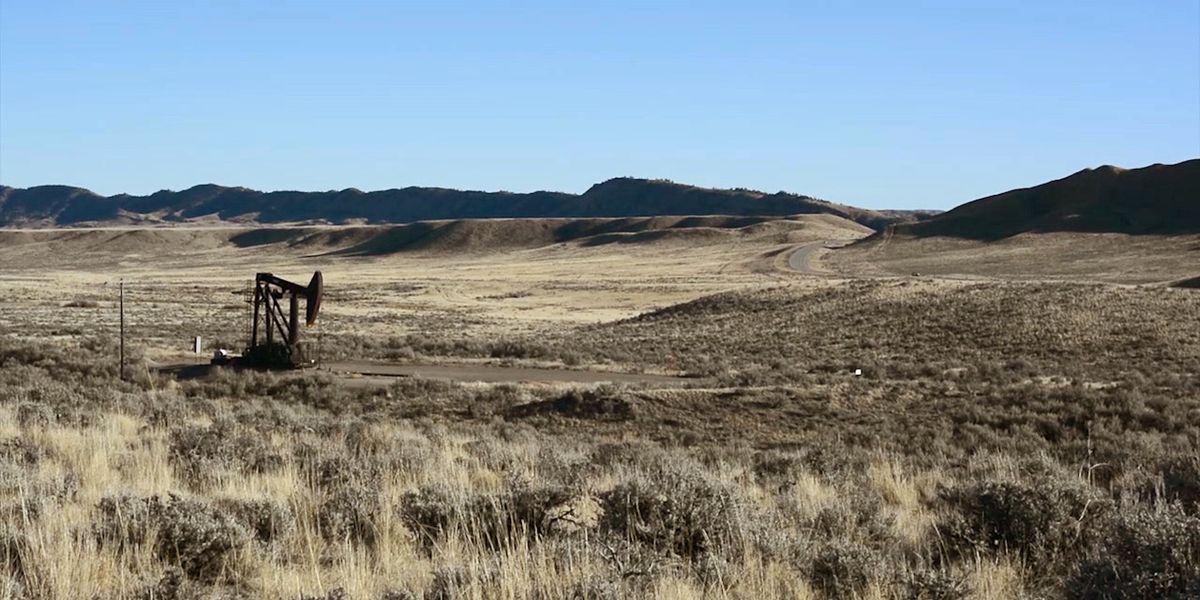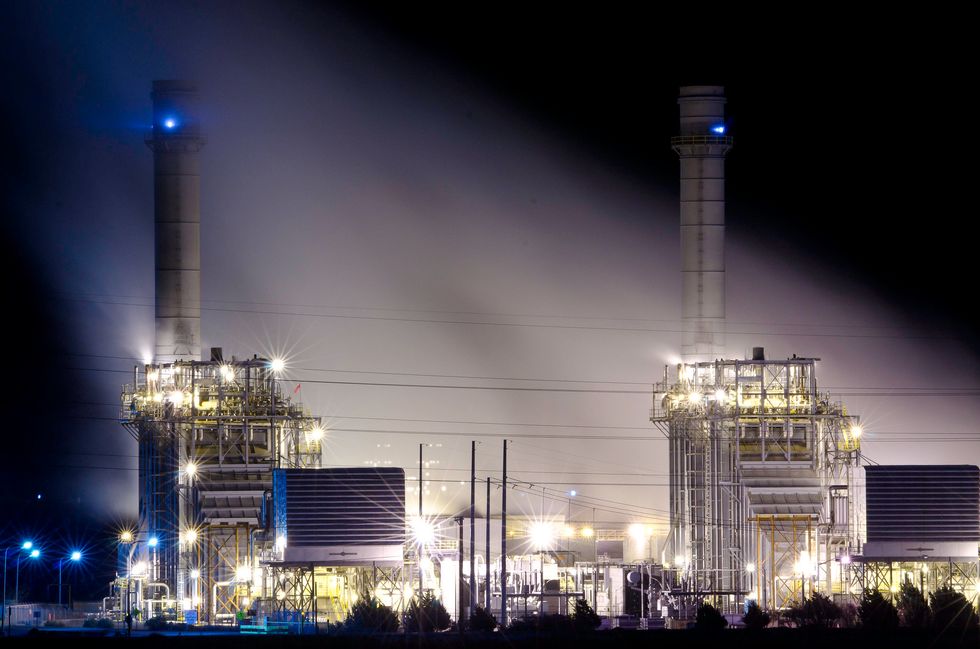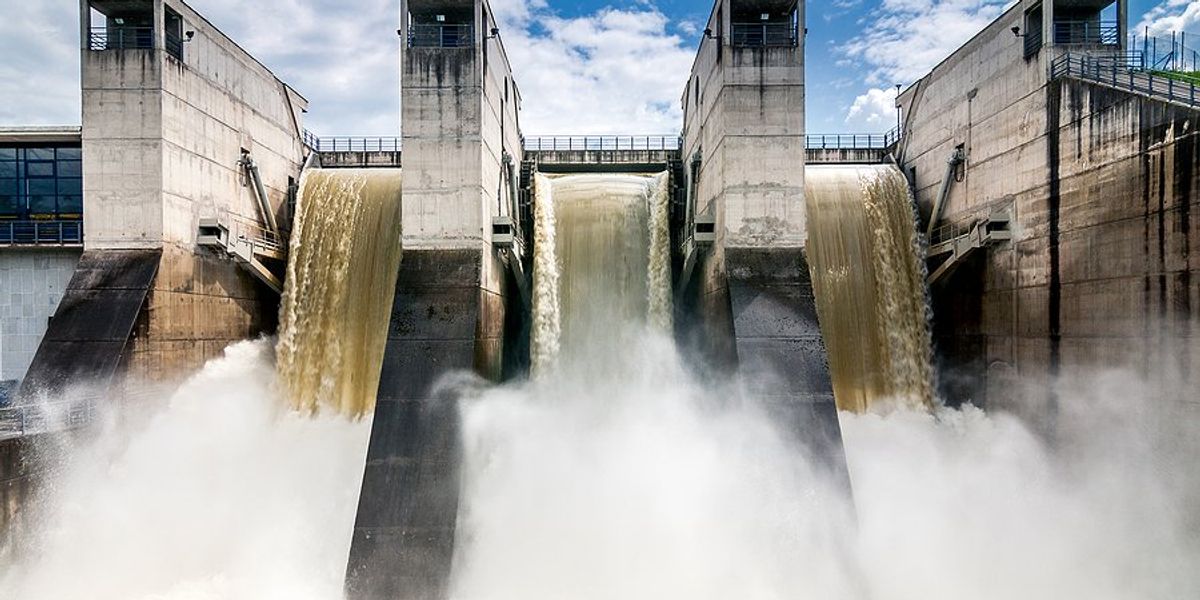
Op-ed: Natural gas vs. renewable energy — beware the latest gas industry talking points
By keeping Americans focused on the climate benefits of gas vs. coal, industry seeks to delay a broader debate of the deficits of gas vs. renewables.
The natural gas industry is on an aggressive public relations tear to convince Americans that for decades to come, it is the "bridge" between coal and renewable energy.
The campaign is loaded with disinformation. The American Petroleum Institute (API) says it's pushing gas as a "foundation for the future" because it is "clean." Major fossil fuel companies including BP, Chevron, ConocoPhillips, ExxonMobil, and Shell are API members. The Independent Petroleum Association of America is playing up outdated 2008 praise of gas by House Speaker Nancy Pelosi to decry pledges by leading 2020 Democratic presidential candidates to ban hydraulic fracturing (fracking) for gas.
Dark money has also ramped up. A group called the Empowerment Alliance popped up last month to condemn the Green New Deal as "radical and unachievable." The Alliance claims: "Eliminating our natural gas advantage will destroy our economy, kill American jobs and lead to more income inequality."
It is no coincidence that the PR blitz comes amid an avalanche of unfavorable developments that should make us question whether natural gas should still be considered a natural choice for power generation.
First, there's the fact that the heat-trapping properties of methane are contributing to climate change, which is accelerating much faster than previously thought.
Plus, a growing number of U.S. cities and states are committing to 100 percent clean energy portfolios over the next 20 to 30 years, which by definition means zeroing out gas use.
And finally, despite record production of natural gas and its current low price, reports indicate that renewable energy is about to become a formidable competitor in cost.
The last point received an exclamation point last month in two groundbreaking reports from the Rocky Mountain Institute (RMI). Its researchers found that America has reached "a historic tipping point" where "combinations of solar, wind, storage, efficiency and demand response are now less expensive than most proposed gas power plant projects," and will undercut the operating costs of existing gas plants within the next 10 to 20 years.
Infrastructure frenzy

Hermiston Generating Plant, Hermiston, OR. (Credit: Scott Butner/flickr)
The tipping point comes as the natural gas industry desperately seeks to tip the scales of energy investment its way for decades to come by locking in a frenzy of infrastructure investments in new power plants and pipelines.
The RMI report counts $112 billion worth of new natural gas plants proposed or under construction, along with $32 billion of proposed pipeline projects to carry the gas from shale fields to the plants.
That has the potential to emit so much methane and carbon dioxide that Joe Daniel, a senior energy analyst at the Union of Concerned Scientists told USA Today, "it would make de-carbonizing the power sector by 2050 nearly impossible."
The natural gas industry's scheme is transparent. The horizontal drilling of the fracking era is unlocking untold reserves. The United States Geological Survey recently announced new estimates of reachable gas in Appalachia and upstate New York that are nearly double the old estimates.
Despite the fact that New York banned fracking in 2014 for its feared health risks, USGS Director Jim Reilly called these reserves "crucial to ensuring our nation's energy independence."
This is the same Reilly who ordered his scientists to study climate change only out to 2040 instead of the rest of the century, when even more dire impacts are expected to kick in.
The discovery of new reserves comes as officials in the Energy Department have rebranded natural gas as "freedom gas," and as the White House recently rolled out its plans to eliminate methane standards for new gas and oil operations.
Even though some of the biggest energy companies said they opposed the rollback of methane standards, the administration's actions are quite convenient for industry's unified attempt to narrowly frame gas as a friend of the environment.
Its PR campaign seeks to keep Americans focused only on the climate benefits of gas vs. coal and delay a broader debate of the deficits of gas vs. renewables.
Gas producers know their claim of being "clean" becomes soiled next to solar and wind. They know their only hope to be a "foundation for the future" is to lock in consumer dependence to gas infrastructure for many decades to come.
Distraction by intimidation

Credit: bill baker/flickr
In one measure of its desperation, the industry is pushing to stomp on free speech. In the time since the 2016 Standing Rock protests against the Dakota Access oil pipeline, several states friendly to fracking have severely increased penalties for protestors of oil and gas infrastructure. The Trump administration wants to expand the list of pipeline protestors who could get up to 20 years in prison.
Current law targets those who willfully damage or destroy an interstate facility. The White House also wants to throw into prison those caught "impeding," "disrupting" or "inhibiting" operations.
The administration and enablers in state legislatures know that without their attempt at intimidation, gas plants and pipelines are about to be impeded by economics. The RMI study comes on the heels of several reports and analysis signaling the economic advantage of renewable energy.
Bloomberg New Energy Finance says that by 2030, "new wind and solar ultimately get cheaper than running existing coal or gas plants almost everywhere." An analysis by Lazard Asset Management that found that the range of unsubsidized levelized costs of onshore wind and utility-scale solar to be below that of natural gas.
The federal Energy Information Administration has estimated that by 2023, the levelized cost of producing power by onshore wind and solar, will be considerably cheaper than natural gas ($36.60, $37.60 and $40.20 per megawatt hour respectively for each energy source). Levelized costs reflect construction and operation costs over the technology's assumed lifetime, including subsidies, which solar and wind currently enjoy.
The growing gap between ever-cheaper renewables and natural gas means that some 71 percent of planned new gas capacity analyzed by RMI could become uneconomic by 2035, potentially resulting in tens of billions of dollars of silent hulks otherwise known as stranded assets. If new pipelines were built, they are likely to become underutilized almost overnight as the amount of gas flowing through them plummets 20 to 60 percent over the next 16 years, depending on the region.
Conversely, RMI says that replacing the planned gas projects with clean energy could save consumers $29 billion and avoid major volumes of greenhouse gases.
What the future could look like
A growing number of decision-makers understand this, including those in surprising places. In one of the "reddest" states in the Midwest, for instance, the Northern Indiana Public Service Company (NIPSCO) selected a clean energy portfolio of wind, solar and batteries over a gas plant bid to replace coal plants.
On its Website, NIPSCO explained to its consumers, "while there is a relatively lower up-front capital cost for new natural gas resources, the savings from renewables as compared to natural gas and existing NIPSCO coal units are largely driven from the difference in lower (i.e. "zero") fuel costs and operating and maintenance expenses, as well as influence from the federal production and investment tax credits."
NIPSCO CEO Joe Hamrock told the New York Times he was surprised to discover that "Renewables in our particular situation were far more competitive than we realized."
In another very red state, Idaho Power has announced a commitment to 100 percent clean energy by 2045. A year ago, Xcel Energy, which serves eight states in the Midwest and Southwest, red, blue and purple, announced a goal of zero carbon emissions by 2050. Several other major utilities, including Duke Energy, have announced major emissions reduction programs, but there is significant controversy over the pledges, based on the level of continued usage of coal plants or the building of plan new gas plants.
Similarly, many major oil and gas producers tout "sustainability" programs to dramatically reduce the carbon footprint of their operations. But those pledges are hard to square with their proclamations about natural gas.
Harry Brekelmans, Shell's projects and technology director, told analysts this summer: "Probably the greatest contribution Shell can make right now is to continue to increase the role of natural gas to fuel transport, heat and light homes, and power industries." ExxonMobil's 2019 Energy and Carbon Summary says: "Natural gas will expand its role, led by growth in electricity generation and industrial output."
This dropping cost of renewables, the urgency of states, counties and cities to get to zero emissions and the assumption by the natural gas industry that it is only going to expand is building toward a reckoning. Natural gas is now America's leading source for electricity generation, providing 35 percent of fuel. The EIA currently expects gas to rise to 39 percent by 2050, still higher than the expected 31 percent of electricity provided by renewables.
The effects of gas becoming our dominant fossil fuel is only now being understood.
Natural gas production and usage in producing power, making fertilizer, heating our homes and cooking our food now send more carbon dioxide into the atmosphere than coal.
Most studies show methane emissions to be soaring in the fracking era, at rates already close to a negating any suggested benefits of natural gas over coal in terms of global warming emissions. Risks to those who live near fracking operations continue to emerge. Just before Trump took office, the Environmental Protection Agency under President Obama found that fracking could contaminate drinking water.
On the hopeful side, there is mounting evidence that the faster we can switch to electric end use at home, in offices, factories and the transportation sector, the faster we can reduce our global warming emissions. That makes the abandonment of environmental protections by the Trump administration and the PR campaign of industry unconscionable.
For several years now, my colleagues at the Union of Concerned Scientists have warned that there was always a "ceiling" on using natural gas to wean ourselves off coal. In a 2013 report, UCS said that while gas might play a "modest" role in a clean energy future, a gas-dominated system will "fail to effectively address the growing dangers of climate change.
With the plummeting costs of renewable energy now calling even the modest benefit of natural gas into question, along with its risky methods and risks to the climate, it should be debated whether gas should be called "natural" at all.
What we do know is that the industry is trying to lead us blindfolded towards its imaginary bridge. When the blindfold is taken off, the so-called bridge is likely to look more like a chasm, with clouds of dust rising from the rubble of stranded assets.
Derrick Z. Jackson is on the advisory board of Environmental Health Sciences, publisher of Environmental Health News and The Daily Climate. He's also a Union of Concerned Scientist Fellow in climate and energy. This post originally ran on the UCS Blog and is republished here with permission.














